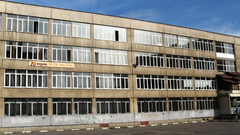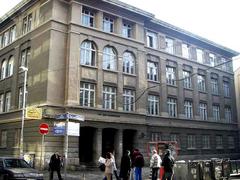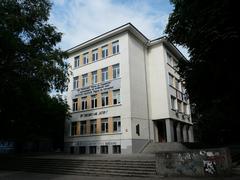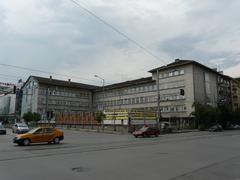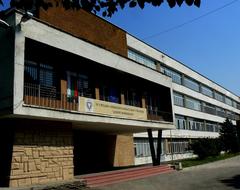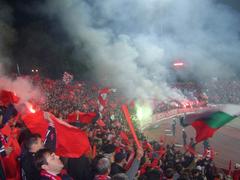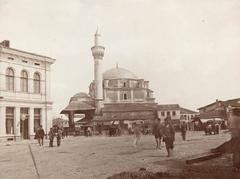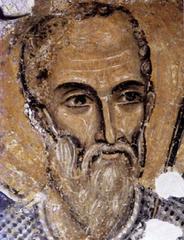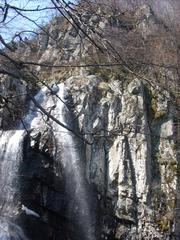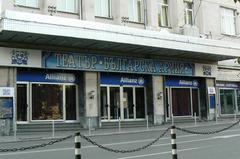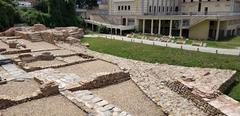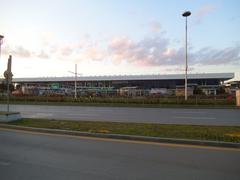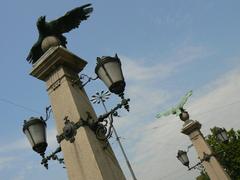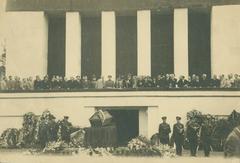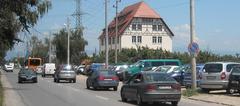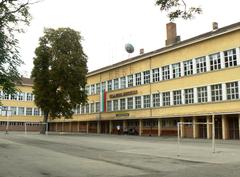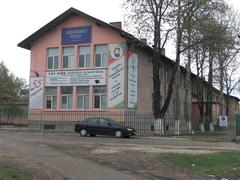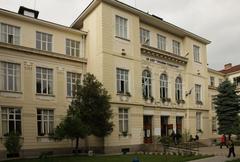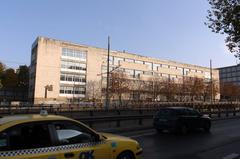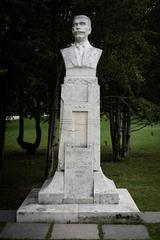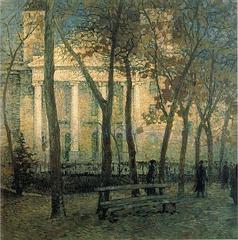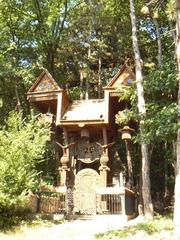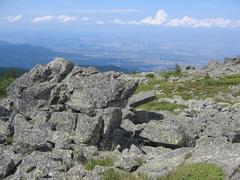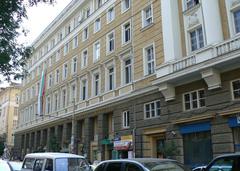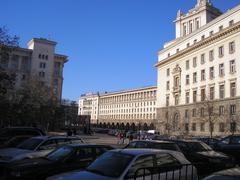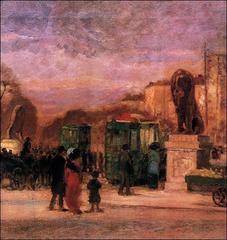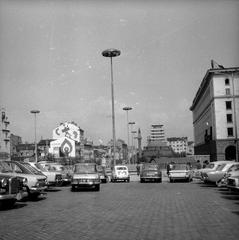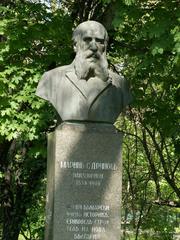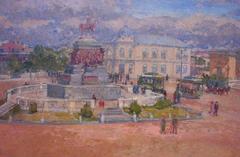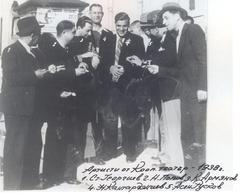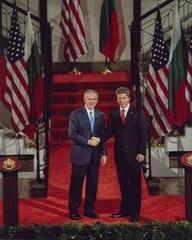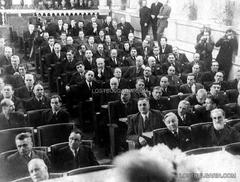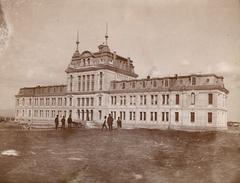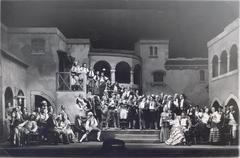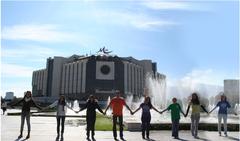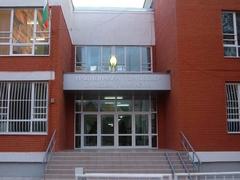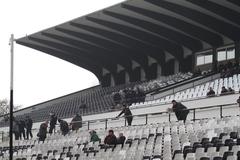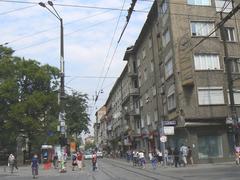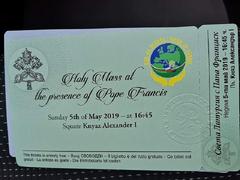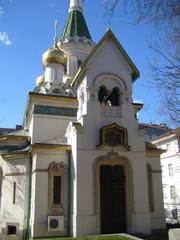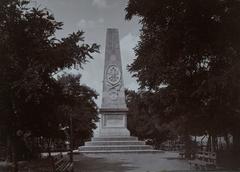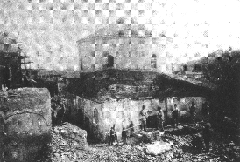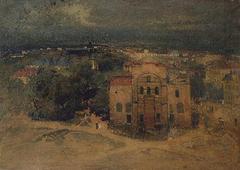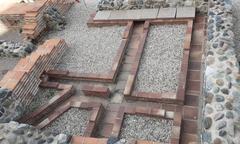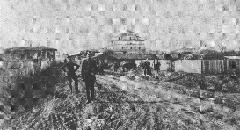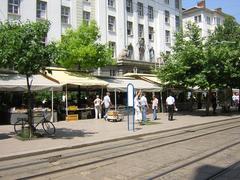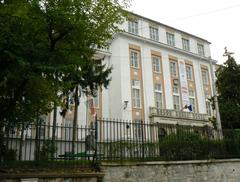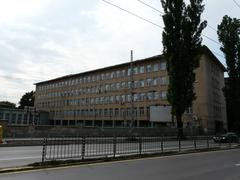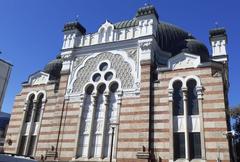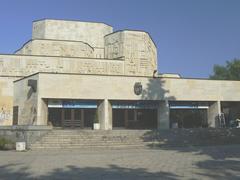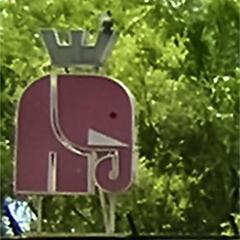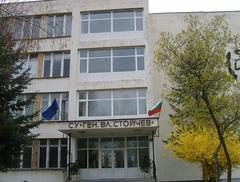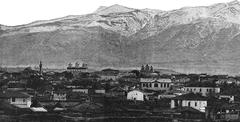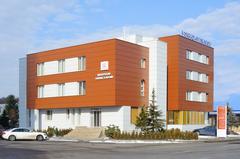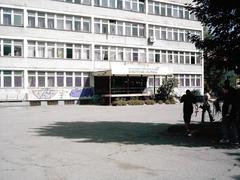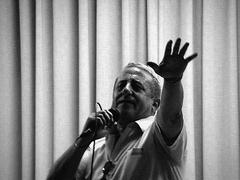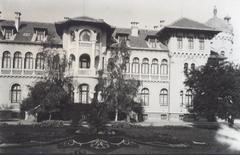
Dragan Tsankov Boulevard, Sofia: Visiting Hours, Tickets, and Travel Guide
Date: 04/07/2025
Discover Dragan Tsankov Boulevard: History, Culture, and Practical Travel Tips
Dragan Tsankov Boulevard stands as one of Sofia, Bulgaria’s most significant urban arteries, seamlessly blending a rich historical legacy with a vibrant present-day cityscape. Named after the renowned Bulgarian statesman Dragan Tsankov, the boulevard has evolved since the late 19th century into a crucial corridor, linking Sofia’s city center to its eastern neighborhoods. Lined with architectural landmarks, green spaces, diplomatic quarters, and bustling institutions, it offers a multifaceted experience for travelers—whether you’re a history enthusiast, a nature lover, or an urban explorer.
This comprehensive guide covers the boulevard’s historical development, key landmarks, practical visitor information (including opening hours and ticketing), adjacent neighborhoods, and transportation options. You’ll also find insights into green spaces, urban renewal efforts, and the socioeconomic impact of the area, ensuring you make the most of your visit. For deeper historical context, urban development trends, and real-time transit details, refer to the scholarly works and transit platforms linked throughout this article (City profile: Sofia, Bulgaria), (Moovit). Whether strolling, sightseeing, or commuting, Dragan Tsankov Boulevard captures Sofia’s dynamic spirit.
Table of Contents
- Introduction
- Historical Evolution
- Urban Significance and Landmarks
- Visitor Information
- Green Spaces and Urban Renewal
- Socioeconomic Impact and Urban Challenges
- Neighborhood Guide
- Frequently Asked Questions (FAQ)
- Visual and Media Resources
- Related Articles and Resources
- Conclusion and Recommendations
- Sources
Introduction
Dragan Tsankov Boulevard is a vibrant, historically rich artery at the heart of Sofia. Its route stitches together some of the city’s most important neighborhoods and landmarks, offering a window into Sofia’s evolution from the late 19th century to today. This guide delivers detailed insight into its history, key sights, practical information for visitors, and tips for making the most of your time along the boulevard.
Historical Evolution of Dragan Tsankov Boulevard
Origins and Early Development
Emerging in the aftermath of Bulgaria’s liberation from Ottoman rule, Dragan Tsankov Boulevard was laid out as Sofia’s urban core expanded (City profile: Sofia, Bulgaria). Named in honor of Dragan Tsankov—a statesman who played a central role in Bulgaria’s early governance—the boulevard was designed as a broad, east-west axis connecting the city center with new residential and administrative districts. Early 20th-century maps show it as a backbone of Sofia’s urban plan.
Interwar and Socialist Periods
Between the World Wars and throughout the socialist era, Sofia’s rapid urbanization cemented the boulevard’s importance. It became the site of major public institutions and housing estates, with the addition of tram and trolleybus lines (Development Pathways of Large Housing Estates in Post-socialist Cities). Notable socialist-era landmarks, such as the Bulgarian National Radio and the development of Borisova Gradina Park, are legacies of this period.
Post-Socialist Transformation
Post-1989, Sofia saw a surge of modernization. Dragan Tsankov Boulevard adapted with new business centers, hotels, and modern office complexes, all while preserving historic and cultural institutions (Landscapes of postmodernity: Changes in the built fabric of Belgrade and Sofia since the end of socialism). Today, it illustrates Sofia’s ongoing transformation into a cosmopolitan European capital.
Urban Significance and Landmarks
Transportation Corridor
Dragan Tsankov Boulevard functions as a major arterial road, connecting districts like Lozenets, Iztok, and the city center. It’s a lifeline for commuters and visitors, supported by tram, bus, trolleybus lines, and the Sofia Metro’s Red Line. Metro stations such as Joliot-Curie and European Union offer easy access to the rest of Sofia (bul. “Dragan Tsankov”).
Institutional, Cultural, and Architectural Highlights
Key sites along the boulevard include:
- Bulgarian National Radio: A symbol of national culture and a striking example of socialist-era architecture.
- Technical University of Sofia: Bulgaria’s leading technical university, with several faculties near the boulevard.
- Borisova Gradina Park: Sofia’s largest green space, perfect for recreation and cultural events.
- Vasil Levski National Stadium: The city’s primary sports and concert venue.
- Diplomatic Districts: Home to foreign embassies and international organizations.
- Historic Bridges and Monuments: Including the Bridge of Friendship, an iconic landmark at the boulevard’s western end.
Visitor Information
Visiting Hours and Tickets
- Boulevard: Open to the public 24/7.
- Borisova Gradina Park: Daily, 6:00 AM–11:00 PM (free entry).
- Bulgarian National Radio: Weekdays, 9:00 AM–6:00 PM (tours by appointment).
- Vasil Levski National Stadium: Event-dependent; tickets available online and at box offices.
- Technical University of Sofia: Access during academic hours; check university website for tours.
Most outdoor landmarks are free to visit; guided tours or special exhibitions may require tickets.
Accessibility and Transportation
- Metro: Joliot-Curie and European Union stations (Red Line) provide seamless access (Moovit).
- Bus/Trolleybus: Extensive network, including lines 413, 67, 72, 88, 94, 102, 109, 120, N1, N2.
- Tram: Nearby lines 10, 12, and 18 serve adjacent districts.
- Parking: Paid and street parking available, especially near major intersections and metro stations.
- Accessibility: Metro and most buses/trolleys offer ramps or low-floor entry; sidewalks are broad and well-marked, though some older buildings may present challenges.
Guided Tours and Tips
- Book guided walking tours for deeper historical and architectural insights.
- Use mobile apps for real-time transit updates.
- Visit early in the day or late afternoon for fewer crowds at popular sites.
- Wear comfortable shoes; the boulevard and adjacent parks are best explored on foot.
Green Spaces and Urban Renewal
Borisova Gradina Park, established in the late 19th century and expanded during socialism, borders much of the boulevard and is a haven for outdoor activities (From “red” to green? A look into the evolution of green spaces in a post-socialist city). Recent urban renewal projects focus on improving pedestrian zones, public transport, and integrating additional green areas—evidence of Sofia’s ongoing commitment to sustainability.
Socioeconomic Impact and Urban Challenges
Dragan Tsankov Boulevard is a sought-after address for both residential and commercial development. It boasts high property values and hosts a mix of local businesses, international offices, and diplomatic institutions. While it’s a hub for economic growth, challenges like traffic congestion and air quality remain. City planners are working to expand public transport, cycling infrastructure, and pedestrian safety.
Neighborhood Guide
Central Sofia & Immediate Vicinity
The boulevard’s western edge is close to Sofia’s city center, with historic architecture, government buildings, and a lively urban atmosphere (Sofia Adventures).
Borissova Gradina
Sofia’s largest and oldest park runs alongside much of the boulevard, offering scenic walking and cycling routes (In Your Pocket).
Yavorov and Izgrev Districts
Residential and diplomatic quarters with leafy streets and modern office buildings (About Sofia).
Dianabad & Scientific-Industrial Zone
Known for mixed-use developments and lively public spaces; Diana swimming complex and Hunting Park are local attractions.
Iztok & Geo Milev
Leafy avenues, embassies, and residential blocks, all well-served by public transport.
Frequently Asked Questions (FAQ)
Q: What are the visiting hours of Dragan Tsankov Boulevard?
A: It is a public street, open 24/7. Parks and institutions have their own hours.
Q: Are tickets required for attractions?
A: No tickets for the boulevard or parks; some events or tours may require booking.
Q: How do I access the boulevard by public transport?
A: Metro stations (Joliot-Curie, European Union), multiple bus and trolleybus lines.
Q: Is the boulevard wheelchair accessible?
A: Most public areas are accessible; check specific buildings for accessibility.
Q: Are there guided tours?
A: Yes, available via local tour operators and city tourism offices.
Visual and Media Resources
For a virtual preview, check out Sofia’s official tourism website and virtual maps. Recommended visuals include images of Dragan Tsankov Boulevard, Borisova Gradina Park, and signature buildings, with alt-text such as “Dragan Tsankov Boulevard and Bulgarian National Radio” or “Borisova Gradina Park entrance.”
Related Articles and Resources
Conclusion and Recommendations
Dragan Tsankov Boulevard is a living tapestry of Sofia’s past and present, uniting history, culture, green spaces, and urban life. Whether you’re drawn by its architectural landmarks, recreational parks, or dynamic neighborhoods, the boulevard offers an experience that is both enriching and accessible. Leverage Sofia’s efficient public transportation, explore on foot or by bike, and immerse yourself in the city’s evolving identity.
For up-to-date information on visitor hours, transit, and events, download the Audiala app and consult official city guides. Start your journey along Dragan Tsankov Boulevard and discover the vibrant heart of Sofia!
Sources and Further Reading
- City profile: Sofia, Bulgaria
- bul. “Dragan Tsankov”, Wanderlog
- In Your Pocket – Dragan Tsankov Boulevard
- About Sofia – Dianabad & Industrial Area
- Bulgaria Streets – Dragan Tsankov Boulevard
- Moovit – Sofia Public Transit
- A-Bulgaria Sofia Guide

